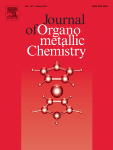Journal of Organometallic Chemistry Special Issues
Journal of Organometallic Chemistry Special Issues
Dear Colleagues:
Since the development of Grignard reactants and later of ferrocene by Wilkinson, Organometallic Chemistry has provided in the last century a huge number of unexpected molecular structures and intriguing reactivity, with important conceptual insights and useful catalysts both for industrial processes and for organic synthesis. Recently, also biochemistry has benefit the input from Organometallic Chemistry, with the discovery of enzymes that carry out organometallic catalysis and novel organometallic complexes with potential biological activity. In this edition of ISOC (ISOC 2013), we want to demonstrate how organometallic systems can contribute to sustain a better future: different aspects ranging from sustainable catalysis, biological applications to novel materials for a green economy, will be examined and described by a team of expert and authoritative lecturers. Topics as water oxidation catalyzed by organometallic complexes relevant in the production of energy from renewable sources, innovative gold-catalyzed C-C- and C-heteroatom-bond formation reactions, catalytic functionalization of hydrocarbons and particularly methane, enantioselective formation of C-N bonds by simple addition of a N-H group on unactivated, metal-promoted asymmetric catalysis, use of pincer complexes in sustainable oxidation catalysis, chiral catalysts for 1,3 dipolar cycloaddition, nitrile hydrations metal-catalyzed, hydroamination reaction of unactivated olefins, theoretical aspects on d0 Schrock metal alkylidene complexes, cross-coupling reactions for new generation solar cells, new reactivity of “old” reactants such as organolithium, novel routes for the transformation of N2 to ammonia with the use of supported early transition metal complexes, organometallic chemistry perspectives in biology and biochemistry as Mo(II), Ru(II) and S-bridged W-Ru dinuclear organometallic complexes capable of splitting molecular hydrogen into proton and hydride under mild conditions, mimicking the function of hydrogenase or organometallic Ru(II) and Os(II) anticancer complexes with new mechanisms of action and their interactions with targets such as RNA, DNA and proteins will be presented and clarified. The role of organometallic systems in the third millennium in building a sustainable future will be also the title of a special issue dedicated from JOMC to our school.
Contributions to this issue may be in the form of articles, preliminary communications, short reviews or Notes (short articles) in this area of research. Note: the research should involve chemistry and/or compounds that would fit the normal definitions of “organometallics”, i.e. involving compounds and/or intermediates having metal-carbon bonds. We would like to have this issue published sometime early in 2014. To meet this goal, we would like to receive all manuscripts by the end of November 2013. All manuscripts should be submitted electronically via the Elsevier/JOMC website at: http://ees.elsevier.com/jorganchem/. You should select this designated special issue “SI:ISOC2013/Adams” with R. Adams as the Regional Editor at that time of the submission.
We believe this issue will attract considerable attention in the organometallics community. We hope that you will be interested in contributing to it. Please don’t hesitate to contact us if you have any questions or ideas or suggestions related to these topics and this issue.
Sincerely,
Claudio Pettinari Richard D. Adams
Guest CoEditor JOM Regional Editor
Email: claudio.pettinari@unicam.it Email: adamsrd@mailbox.sc.edu



